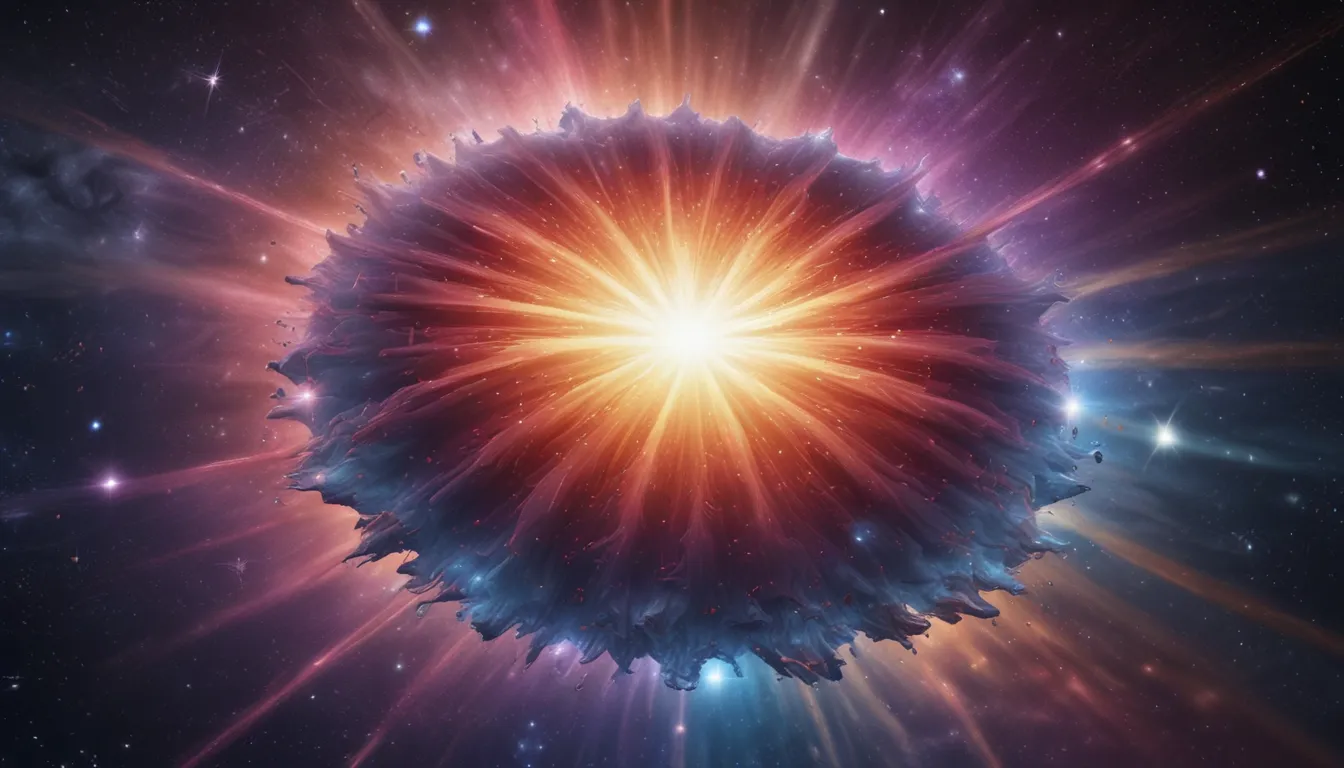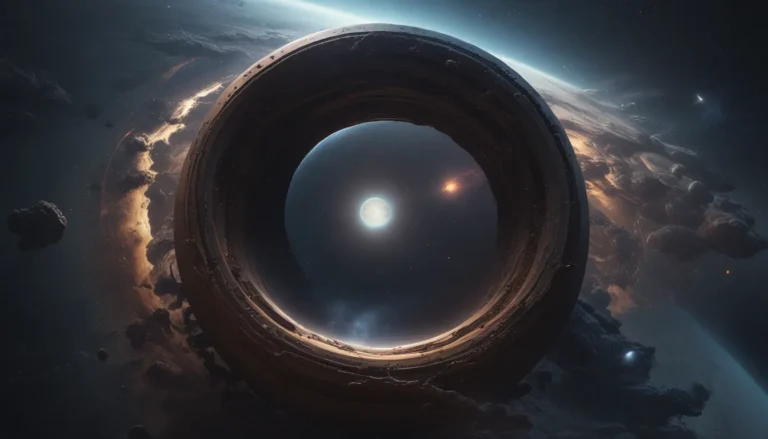The pictures we use in our articles might not show exactly what the words say. We choose these pictures to make you interested in reading more. The pictures work together with the words but don’t take their place. The words still tell you the important facts.
The universe is a vast and mysterious place, filled with celestial wonders that ignite our curiosity and inspire our imagination. Among these cosmic marvels, Starburst galaxies stand out for their intense star formation and energetic radiation, creating a spectacle that illuminates the cosmos. In this article, we will delve into the captivating world of Starburst galaxy evolution and unravel 17 mind-blowing facts that shed light on their origins, characteristics, and significance in shaping our understanding of the universe. Prepare to embark on a cosmic journey that will astound and inspire you as we explore the secrets of these cosmic powerhouses.
The Enigmatic Starburst Galaxies
Starburst galaxies are like cosmic fireworks, bursting with intense star formation, energetic radiation, and compact clusters of stars. They play a crucial role in shaping the evolution of the universe and continue to fascinate astronomers with their captivating features. From galactic collisions to supermassive black holes and bursts of star formation, the influence of Starburst galaxies extends far beyond their luminous appearance, offering valuable insights into the complex processes of galaxy formation and evolution.
The Spectacular World of Starburst Galaxy Evolution
Intense Star Formation
One of the most defining characteristics of Starburst galaxies is their incredible rate of star formation. These galaxies experience a frenzy of stellar birth, producing stars at a rate up to 100 times higher than that of a regular galaxy. This intense star formation activity sets them apart as cosmic powerhouses, fueling their luminous radiance and shaping their unique characteristics.
Energetic Radiation
The intense burst of star formation in Starburst galaxies leads to the release of copious amounts of radiation across the electromagnetic spectrum. From radio waves to gamma rays, the energetic radiation emitted by these galaxies illuminates the cosmos and offers a glimpse into the remarkable processes at play within their compact and dense structures.
Galactic Collisions and Supermassive Black Holes
Galactic collisions serve as a prominent trigger for the starburst activity observed in these celestial objects. When two galaxies collide, the gravitational interactions can disrupt the gas and dust within them, leading to the rapid formation of new stars. Additionally, many Starburst galaxies host supermassive black holes at their centers, which grow rapidly during the starburst phase, releasing tremendous amounts of energy and influencing the surrounding environment.
Cosmic Feedback and Bursty Star Formation
Starburst galaxies exert a significant impact on their surroundings through a process known as cosmic feedback. The energy released during their starburst phase can influence the growth and evolution of neighboring galaxies, shaping the intricate web of cosmic connections that define the universe. Moreover, the star formation in these galaxies occurs in bursts or episodes, lasting millions of years and punctuated by periods of relative quiescence, adding a dynamic element to their evolutionary journey.
Unique Spectral Signatures and Morphological Changes
Starburst galaxies exhibit unique spectral signatures that allow astronomers to identify them based on the presence of young, hot stars, ionized gas, and energetic radiation. These signatures offer valuable insights into the intricate processes at work within these celestial objects. Additionally, during the starburst phase, these galaxies undergo significant morphological changes, distorting their shapes and creating features such as tidal tails, bridges, and asymmetries that showcase the dynamic nature of their evolution.
Stellar Nurseries and Role in Galaxy Evolution
Starburst galaxies often host compact clusters of stars known as "super star clusters," containing hundreds or even thousands of young, massive stars. These clusters serve as stellar nurseries, fueling the intense star formation observed within these galaxies. Furthermore, Starburst galaxies play a crucial role in the evolutionary process of galaxies, influencing the distribution of matter and driving the growth and evolution of galaxies over cosmic timescales.
Unveiling the Mysteries of Starburst Galaxy Evolution
These 17 mind-blowing facts about Starburst galaxy evolution offer a glimpse into the remarkable processes at play in these cosmic phenomena. From their intense star formation and energetic radiation to their role in shaping neighboring galaxies, Starburst galaxies continue to captivate astronomers and deepen our understanding of the universe. As we venture further into the cosmos, the mysteries of galactic evolution unfold before us, revealing the intricate connections that bind galaxies together and shape the fabric of the universe.
Conclusion: A Cosmic Laboratory of Discovery
In conclusion, the evolution of Starburst galaxies is a captivating topic that continues to captivate scientists and researchers alike. The intricate processes and phenomena that define these cosmic powerhouses offer valuable insights into the formation and evolution of galaxies, shedding light on the mysteries of the universe. As we peer into the vastness of space, Starburst galaxies stand as cosmic laboratories, inviting us to explore and unravel the secrets of galactic evolution. By studying their properties and observing their behaviors, we gain a deeper understanding of the mechanisms that drive cosmic evolution and shape the universe we call home.
With ongoing advancements in technology and the unwavering dedication of astronomers, the quest to understand the origins and development of Starburst galaxies remains an exciting journey of discovery. As we continue to explore the cosmos and uncover new revelations about these celestial marvels, the allure of Starburst galaxy evolution will undoubtedly captivate and inspire us for years to come.
FAQs
Q: What is a Starburst galaxy?
A Starburst galaxy is a galaxy undergoing an intense period of star formation, with a significantly higher rate of stellar birth compared to typical galaxies.
Q: How do Starburst galaxies form?
Starburst galaxies can form through various mechanisms, such as galactic collisions, interactions with other galaxies, or the abundance of gas and dust in their vicinity.
Q: What causes the high star formation rates in Starburst galaxies?
The high star formation rates in Starburst galaxies can be attributed to gravitational interactions between gas clouds, triggering the collapse and formation of new stars.
Q: Do all galaxies go through a Starburst phase?
Not all galaxies experience a Starburst phase, as it depends on factors such as the galaxy's environment, interactions with neighboring galaxies, and the availability of gas and dust.
Q: Can Starburst galaxies evolve into other types of galaxies?
Yes, Starburst galaxies can evolve into different types of galaxies over time, transitioning into more quiescent galaxies with less active star formation processes.
Join us on this cosmic journey as we unravel the mysteries of Starburst galaxy evolution, exploring the depths of the universe and discovering the secrets hidden within the cosmic tapestry. Dive into the realms of cosmic powerhouses and celestial wonders, where each discovery brings us closer to understanding the vast and enigmatic universe that surrounds us. Trust in our commitment to quality and authenticity as we navigate the cosmos together, seeking knowledge and inspiration in the boundless expanse of space.






